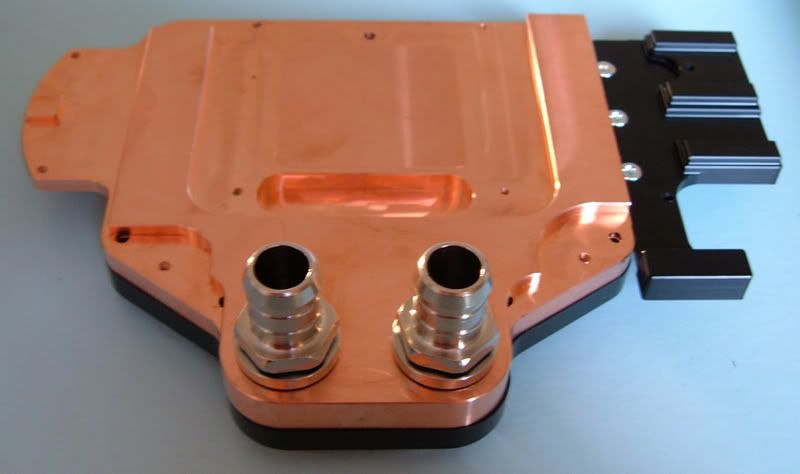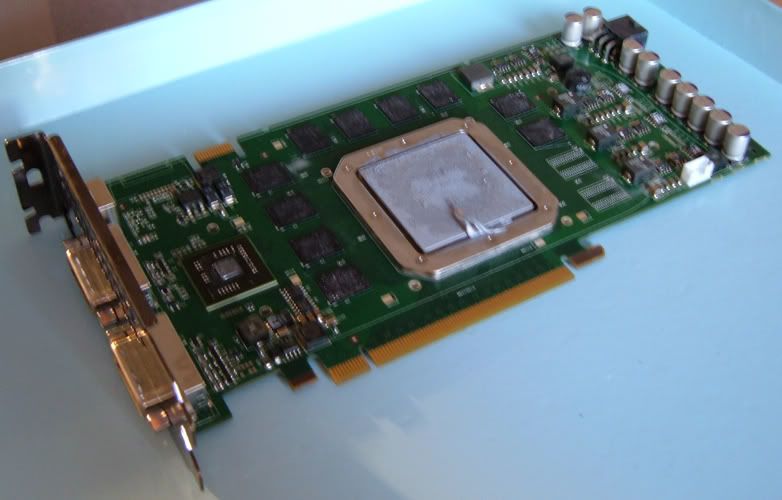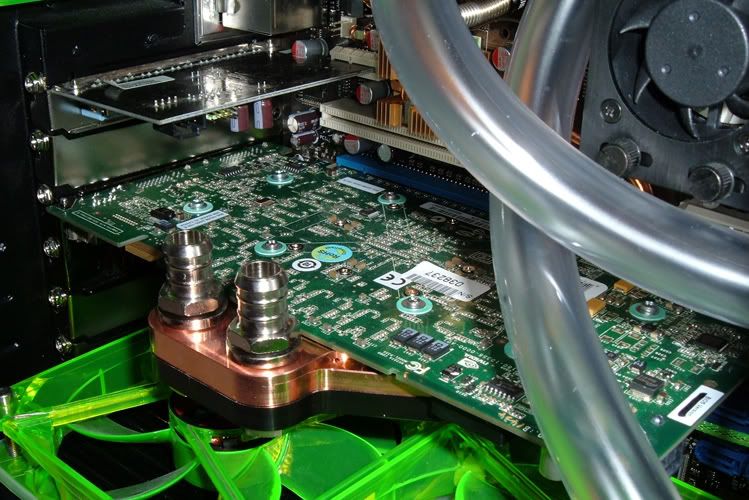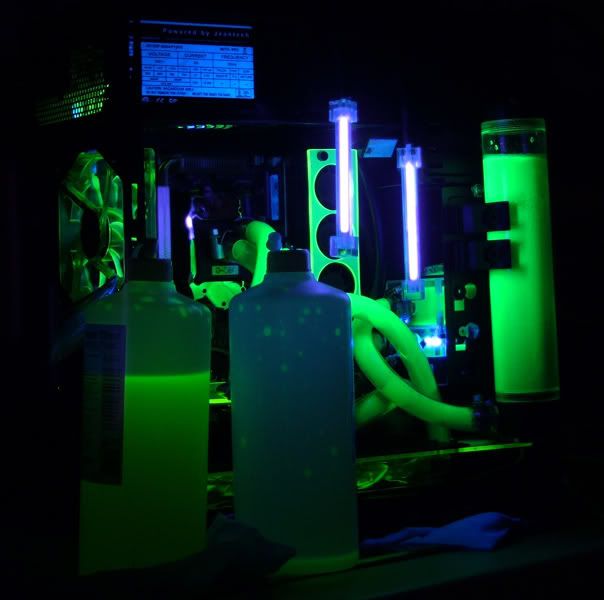I brought my Nvidia 8800GTS around 3 months ago and put quite simply, she was my baby. I had never owned a 'good' graphics card before and this one was a huge step up for me. However even though the performance was more than I needed, being only human, I wanted to push it that little bit further. The only limitation to this was the temperature, it ran so hot. Under a full load it would often reach 80'c. This to me was unacceptable so the best option would be to add it to the watercooling loop.
There are so many waterblocks on the market nowadays it took quite a while to decide which one to go with. In the end I chose the EK Full Cover Block with the Acetal Top. It seemed to have very good overall performance for several reviews and also IMO looked the part.
And here it is a couple of days after being ordered
And here is my beloved card (I couldn't help thinking the man on the graphic was holding his head in a desperate panic seeing me with a screwdriver and a waterblock, having never fitted one before lol)
So anyways after reading the instructions several times over I took the plunge and carefully removed the standard heatsink to expose the bare card.
After cleaning off the thermal paste from the core and taking the thermal pads off the voltage regulators and memory I began to prepare the waterblock. I had all the nuts, washers and screws laid out before me in the order I would need them in a desperate attempt to make sure nothing went wrong. Applied the thermal paste (Arctic Silver Pro) and placed on the thermal pads with a pair of tweezers, then began mounting the block to the card. I have to say it was one of the single most frustrating this I have ever done. I haven't got tree trunk fingers but they are by no means small and seemed incapable of holding onto the tiny screws and washers. But after quite some time I finally got there and now had a high end graphics card setup for watercooling. Needless to say I was very happy indeed.
Here it is fitted (apologies for the low quality pictures)
Last thing to do was to pop it into the PCI-E slot out of harms way.
Thanks again for reading, Xperiment












 Reply With Quote
Reply With Quote


 ). That video card cover is so simple, yet so effective.. I wonder why I haven't thought of that before! Also, I really like the idea for the res. I've been trying to think of how to mount one, and that is a really good way! This thing is off to a great start man, +rep.
). That video card cover is so simple, yet so effective.. I wonder why I haven't thought of that before! Also, I really like the idea for the res. I've been trying to think of how to mount one, and that is a really good way! This thing is off to a great start man, +rep.







